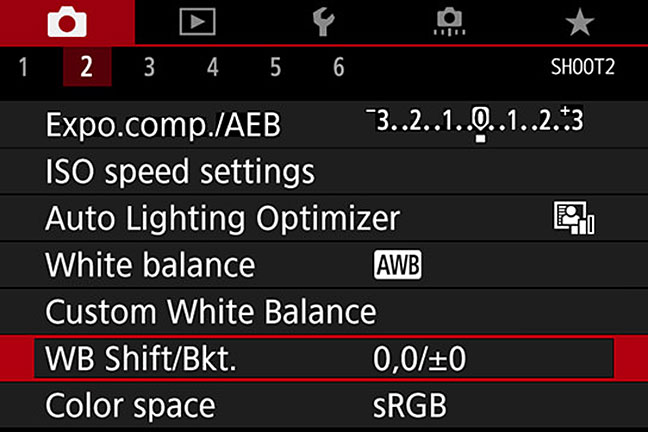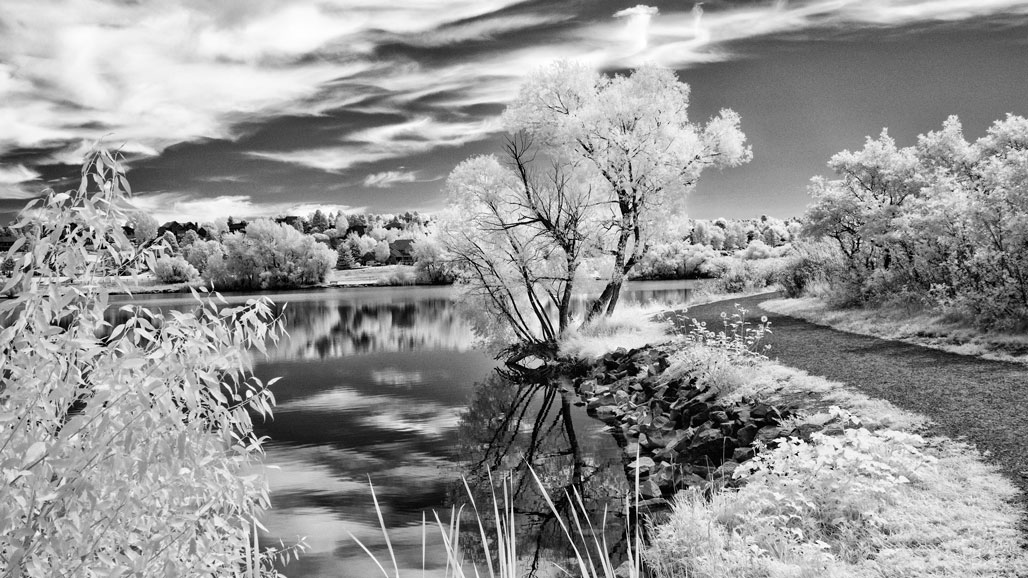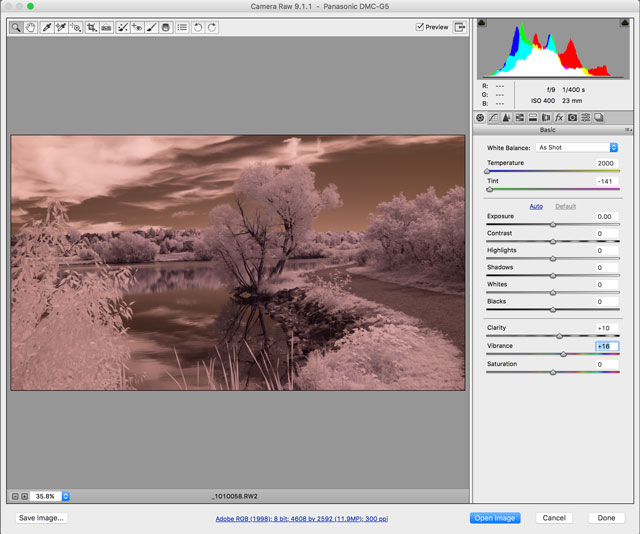This is a follow up to last Tuesday’s post: Travel Tuesday: Infrared Photography in Your Own Backyard as I once again attack some of the technical challenges of shooting digital infrared images.
Today’s Post by Joe Farace
Recently a reader asked: I had my Canon 30D converted to infrared and have been experimenting with it. It’s loads of fun but every photo comes out with a magenta-ish tone. At first, it was blue-ish, which I prefer but no matter what I do, including making a Custom White Balance setting, it seems to be magenta. I am wondering if there is some setting I am missing to have them come out more blue-ish or even more black and white-ish. I have researched this pretty well on the web and found some interesting articles but nothing on point with this issue.
 There are three possible ways to approach the question of color balance with infrared photography:
There are three possible ways to approach the question of color balance with infrared photography:
First, if you want to do it in camera, you should have another try at creating a custom white balance by making a photograph of the grass on your lawn or a nearby park. Select Custom WB from your IR-converted camera’s menu, which lets you pick your test image, then click OK. You may have to read your User’s Guide to see how it works for your specific camera but it’s just a matter of making a photograph, pulling a few menus and pressing a button.
The key to achieving your goal is the choice of subject matter; for infrared capture this works best with grass. Keep in mind that whether you use an IR filter in front of the lens or have your camera converted for IR capture (see my video on this subject) most of the time most the results will have some kind of a slight color shift.

How I made this shot: During a walk around Colorado’s Bingham Lake I made this photograph with a Panasonic Lumix G5 that was converted to infrared capture by LifePixel. Lens was the Lumix G Vario 14-42mm f/3.5-5.6 (at 23mm) with an exposure of 1/400 sec at f/9 and ISO 400. It was processed into Black & White per the third item below.
Second, you can shoot in Monochrome mode and all of the black and white files will be in black and white There are some thoughts on this methodology in my car photography blog in a post called, Is White Balance Important in IR Photography? which shows an example exhibiting the blue color shift that the reader was referring to.Hopefully, it has all the scoop you need on the subject. And then there’s…
 Third. Capturing images in RAW format gives you the best shot at maximizing imaging quality but I always hedge my bets by shooting in RAW+JPEG mode, with the camera set in Monochrome mode. This gives me a preview on the camera’s LCD screen of what the image will look like in black and white. I view these JPEGs in Adobe Bridge to select the RAW file that I will ultimately process the image. Then I open the RAW file, sometimes using ACR’s Clarity and Vibrance sliders to tweak the image. Then, while in Photoshop I typically use the Silver Efex plug-in to convert that RAW file into black and white, as I did with the above photograph.
Third. Capturing images in RAW format gives you the best shot at maximizing imaging quality but I always hedge my bets by shooting in RAW+JPEG mode, with the camera set in Monochrome mode. This gives me a preview on the camera’s LCD screen of what the image will look like in black and white. I view these JPEGs in Adobe Bridge to select the RAW file that I will ultimately process the image. Then I open the RAW file, sometimes using ACR’s Clarity and Vibrance sliders to tweak the image. Then, while in Photoshop I typically use the Silver Efex plug-in to convert that RAW file into black and white, as I did with the above photograph.
And if you don’t find the exact answers you’re looking for either in this or any linked post, click the Contact button atop this page and ask a specific question. There’s no charge for this.
